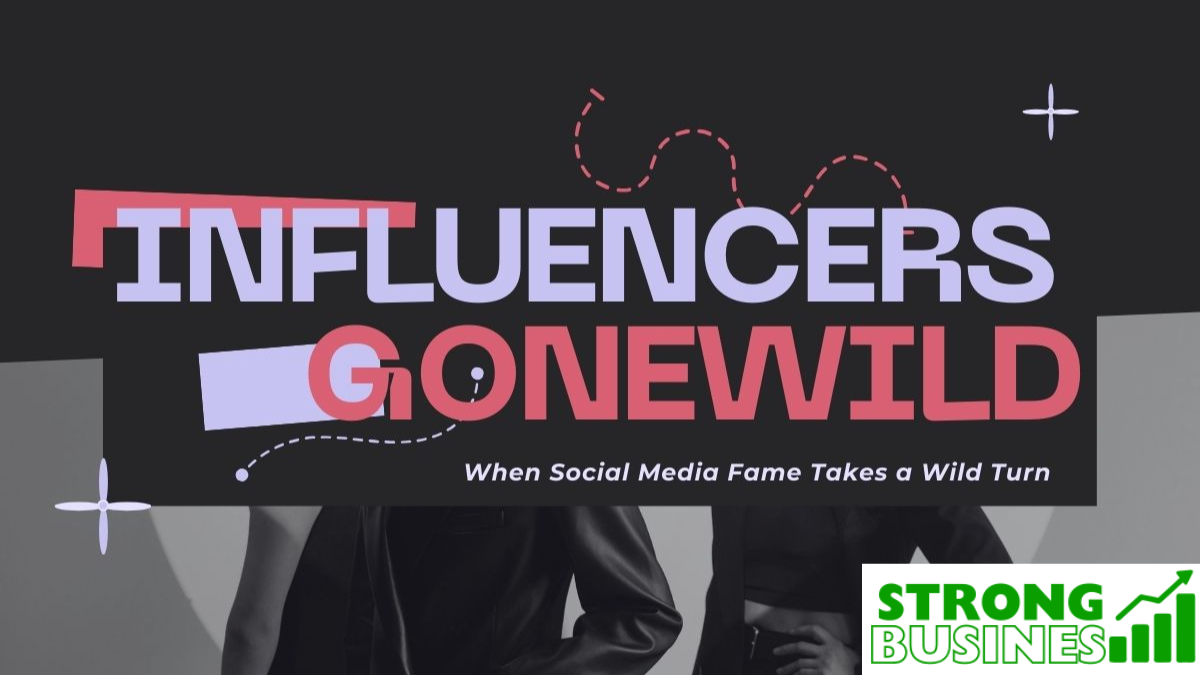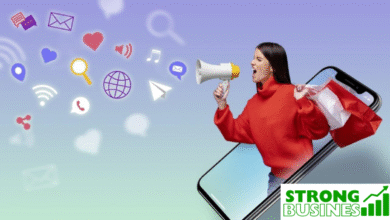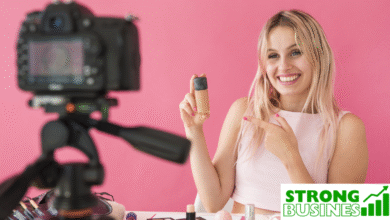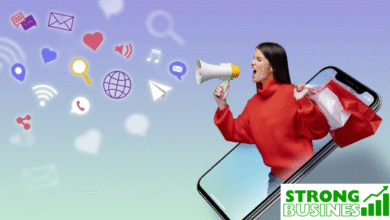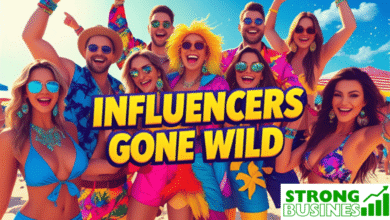The Rise of Influencers in the Digital Era
Influencer Gone Wild In the fast-moving world of digital media, influencers have taken center stage as trendsetters, role models, and powerful marketing tools. Their rise has been fueled by platforms such as Instagram, TikTok, YouTube, and X, where everyday individuals can amass millions of followers and wield significant influence. The influencer economy has given birth to a new class of celebrity—relatable, accessible, and often unfiltered. However, with this rise comes an increase in pressure, scrutiny, and moments where things spiral out of control. The phenomenon of the “influencer gone wild” encapsulates these breakdowns, controversies, and unexpected behaviors that captivate audiences and spark intense online debate.
Understanding the Meaning of Influencer Gone Wild
The phrase “influencer gone wild” captures a broad range of behavior. It can refer to an influencer having a public meltdown, getting caught in a scandal, or engaging in bizarre or offensive behavior for views. These incidents often become sensationalized, turning into trending topics and memes. The allure of watching someone who appears to have it all unravel is irresistible to many viewers. These events serve as modern-day cautionary tales about the consequences of unchecked fame, performative behavior, and the double-edged sword of social media attention.
The Psychological Pressure of Instant Fame
One of the key drivers behind influencers going wild is the psychological burden of maintaining a constant online presence. Many influencers experience sudden fame, which they are not mentally prepared for. The requirement to always appear happy, fashionable, and entertaining creates immense pressure. Burnout becomes common, and the boundaries between personal and public life disappear. In such an environment, emotional breakdowns, impulsive posts, and erratic decisions are often the result of suppressed stress and anxiety. The persona they present may be far removed from the real person struggling behind the screen.
When Curated Perfection Crumbles
Influencers are often seen as modern lifestyle icons. Their photos are pristine, their routines seem productive, and their lives appear aspirational. However, this curation can be unsustainable. When the mask slips, and raw, unedited emotions emerge—whether through rage, tears, or inappropriate comments—the contrast can be jarring. These moments of “going wild” often reflect an internal crisis. The influencer’s identity is tied so tightly to their brand that any deviation from the expected norm becomes headline-worthy. The gap between authenticity and performance becomes too large to manage, leading to breakdowns in public view.
The Role of Algorithm-Driven Engagement
Social media algorithms reward engagement—likes, shares, and comments—regardless of whether the content is positive or negative. This leads to an environment where controversial behavior is sometimes incentivized. Influencers may push boundaries, start fights, or say shocking things to stay in the algorithm’s favor. In chasing virality, they may lose control of their own narrative. Some of these moments are staged, but many are not. The constant need to outperform themselves creates a vicious cycle, and when they go too far, it can appear as though the influencer has gone wild, even if it was all part of a strategy gone wrong.
The Public’s Appetite for Scandal
The digital audience plays a huge role in the rise of influencers and their eventual missteps. While fans initially support and elevate their favorite influencers, they are often just as quick to turn against them. When influencers falter, many viewers are eager to dissect, mock, and cancel them. There is a unique cultural fascination with watching someone fall from grace. Social media magnifies this behavior, turning every slip-up into a viral moment. Whether it’s a party during a pandemic, a racially insensitive joke, or a cryptic emotional breakdown, the public’s reaction fuels the spectacle.
The Blurred Lines Between Reality and Performance
In the influencer world, it becomes difficult to separate what is real from what is manufactured. Every post, video, or live stream is part of a larger content strategy. Yet, when influencers show vulnerability, it’s unclear whether they are being genuine or manipulating emotions. When an influencer breaks down on camera or rants on a live feed, is it a cry for help or a performance for views? The ambiguity adds to the chaos. Audiences speculate, critics dissect, and the influencer often loses control of their own story.
Cancel Culture and Redemption Arcs
When influencers go wild, they often face the wrath of cancel culture. A tweet from the past, a slip-up during a live stream, or a poorly thought-out video can result in instant backlash. Brands drop partnerships, followers disappear, and apologies flood timelines. Yet, some influencers bounce back. They go on digital detoxes, release apology videos, or rebrand themselves entirely. The redemption arc has become just as common as the fall. However, the success of this comeback depends on sincerity, timing, and the audience’s willingness to forgive.
The Role of Mental Health in Influencer Behavior
Mental health challenges are widespread in the influencer community. The constant need to be online, the fear of irrelevance, and the exposure to criticism can have detrimental effects. Depression, anxiety, imposter syndrome, and emotional exhaustion are common. These issues often culminate in erratic behavior or public outbursts. While some influencers address these challenges openly, others struggle in silence. When they finally crack, the reaction is swift and brutal. The influencer gone wild moment is often the result of long-standing emotional distress rather than a single lapse in judgment.
The Impact on Fans and Young Audiences
Influencer culture significantly impacts younger audiences who look up to these personalities as role models. When an influencer goes wild, it can create confusion or disillusionment among fans. Young people who mimic influencers’ lifestyles, speech, and values may begin to question their own behavior. The responsibility that comes with influence is immense, yet many influencers are unprepared for the impact they have. Wild behavior, even if unintentional, sends mixed messages about what is acceptable and can lead to imitative or destructive actions among impressionable viewers.
The Dark Side of the Influencer Economy
The influencer industry is highly lucrative but also cutthroat. The competition is fierce, and relevance is fleeting. Influencers are often pressured to maintain high engagement and continuously innovate their content. This environment can lead to risk-taking behavior, including controversial stunts, substance abuse, or public feuds. Financial stress, mismanagement, and exploitation by agents or platforms contribute to the instability. Behind the glamorous façade lies a world of insecurity, manipulation, and personal sacrifice that can push influencers to the edge.
Feuds, Call-Outs, and Digital Wars
Feuds between influencers often escalate into full-blown online wars. What begins as a minor disagreement can evolve into a public spectacle involving accusations, clapbacks, and loyal fanbases going to battle. These moments attract massive attention and are often capitalized on by media outlets. Whether it’s two beauty gurus fighting over product launches or streamers accusing each other of unethical behavior, these wild public dramas dominate social feeds. Sometimes orchestrated, other times genuine, they highlight the emotional volatility and competitive nature of influencer life.
The Ethics of Watching the Breakdown
There is an ethical dilemma in how the public consumes influencer scandals. Many people enjoy watching influencers go wild as a form of entertainment, but this can dehumanize the individuals involved. Viewers may forget that behind the viral clips and dramatic posts is a real person experiencing real distress. Laughing at someone’s mental breakdown or reveling in their misfortune can perpetuate harm. Compassion, understanding, and digital empathy are necessary to reshape how audiences engage with these episodes.
Platform Accountability in Influencer Behavior
Social media platforms bear a share of responsibility for the influencer gone wild phenomenon. The design of these platforms encourages sensationalism, clickbait, and polarizing content. Their algorithms elevate the most engaging posts, regardless of ethical considerations. While platforms have started to address issues like harassment, hate speech, and misinformation, enforcement remains inconsistent. More transparency, better moderation, and stronger mental health support are needed to create a safer environment for influencers and audiences alike.
Rebuilding After the Storm
For some influencers, a wild moment marks the end of their online presence. For others, it becomes a turning point. Influencers who take responsibility, show growth, and engage in meaningful change can regain public trust. This often involves stepping back, seeking professional help, and reevaluating their values. The road to redemption is long and filled with scrutiny, but those who are sincere in their efforts often find a more loyal and mature audience awaiting them on the other side.
Influencer Management and Professional Support
As influencer careers become more structured, professional support has become essential. Agencies, legal advisors, managers, and therapists are now part of many influencer teams. These professionals help manage image, handle crises, and ensure that influencers stay grounded. However, not all influencers have access to this kind of support, especially those who rise quickly and independently. The lack of professional guidance can result in poor decisions that lead to the infamous wild moments that damage reputations and mental well-being.
Digital Literacy and the Audience’s Role
Audiences must also play a role in fostering healthier influencer culture. Being digitally literate means understanding the difference between authenticity and performance, avoiding toxic engagement, and questioning the motives behind sensational content. Viewers have the power to shape trends, reward ethical behavior, and discourage harmful actions. Cultivating a respectful and conscious digital environment is essential to reducing the pressure that drives influencers to go off the rails.
A Reflection of Modern Culture
The influencer gone wild phenomenon is not just about individuals losing control—it reflects deeper issues in modern society. It highlights how we consume media, chase attention, and respond to vulnerability. It speaks to the performative nature of online life and the mental strain of constant exposure. These episodes are cultural commentaries Influencer Gone Wild on fame, identity, and accountability in the digital age. They reveal that the influencer experience is both alluring and perilous.
Conclusion Walking the Digital Tightrope
Being an influencer in today’s world is like walking a digital tightrope. The balance between authenticity and branding, connection and privacy, fame and fallibility is incredibly fragile. When influencers go wild, it’s often a signal that the system they operate in is broken or unsustainable. Rather than viewing these moments as mere entertainment, it’s important to recognize the human cost behind the spectacle. Through empathy, responsible platform governance, and digital maturity, society can shift the narrative and support a healthier, more balanced influencer ecosystem.
